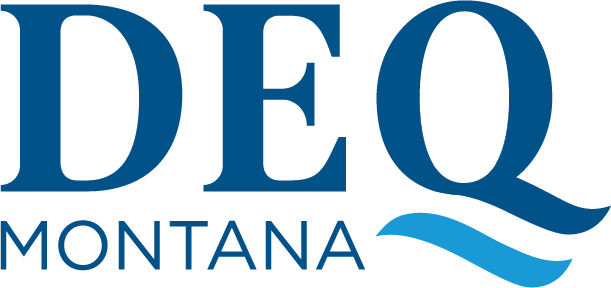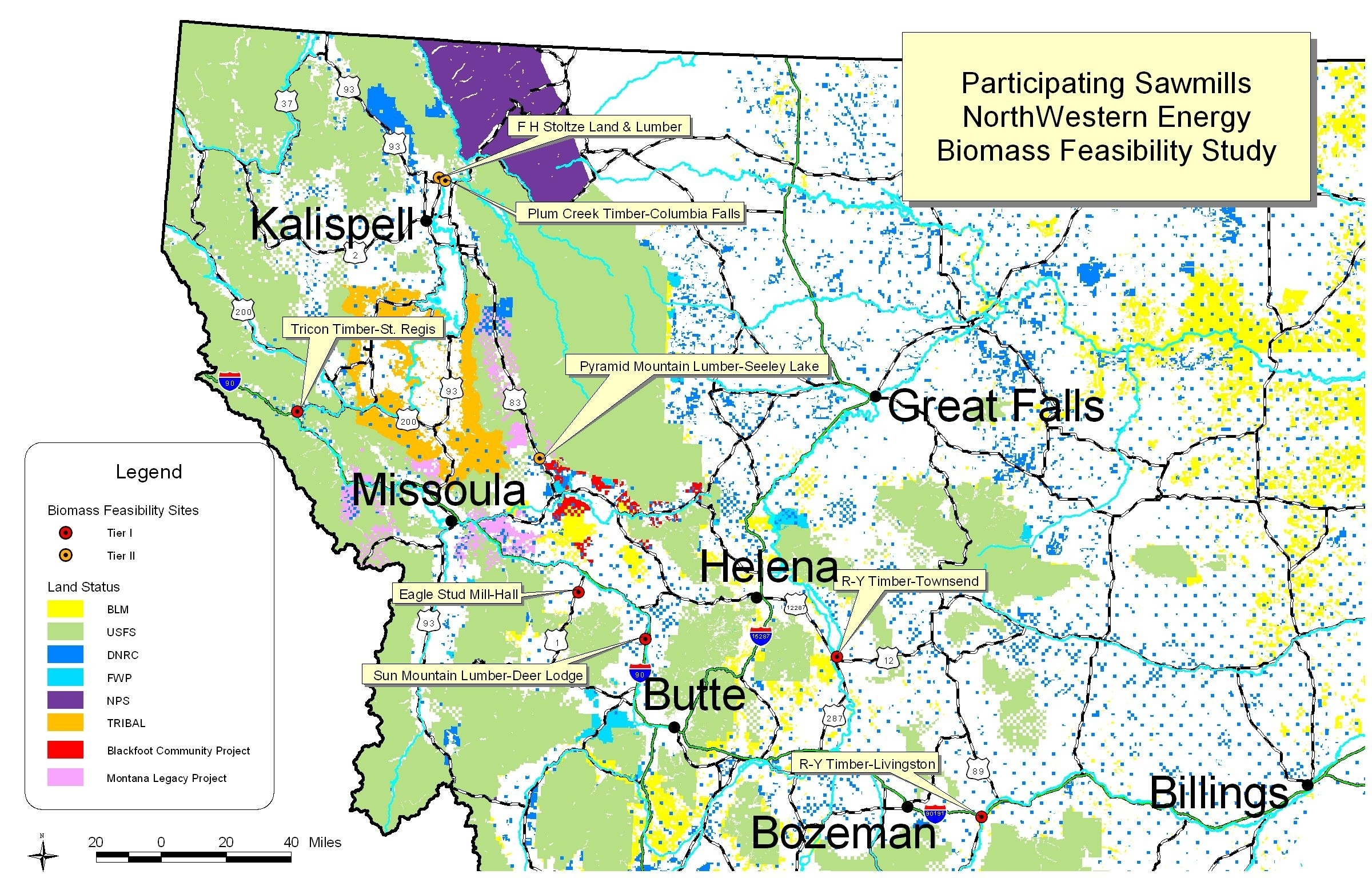Renewable Energy Overview
Renewable Energy Contacts
Section Supervisor
Kyla Maki (406) 444-6459
Energy Resource Professional
Meranda Bass (406) 444-6586
Energy Resource Professional
Jessi Finstad (406) 444-1842
Wind
Montana is ranked among the top five states for wind power potential and several large, utility-scale wind farms are in operation. A report by the Northwest Power and Conservation Council indicates that Montana's wind resources may be consistently more productive than the Columbia River Gorge.
Montana's total capacity of installed commercial wind turbines was about 805 megawatts at the end of 2018.
About 8 percent of the electricity generated in Montana in 2016 came from wind, a percentage that is expected to continue to grow.
The following links offer more information about wind and wind development opportunities in Montana.
House Bill 216 (HB216) passed the Legislature and was signed by the Governor in May 2017. The bill requires owners of wind generation facilities 25 megawatts and greater to submit decommissioning plans and bonds to the Department of Environmental Quality and requires DEQ to adopt rules prescribing:
- The standards and procedures for the submission of reasonable bonds with good and sufficient surety by the owners of wind generation facilities
- The collection of penalties;
- Criteria and the process for releasing the bond;
- DEQ's use of a bond in the event that the owner of a wind generation facility fails to decommission a wind generation facility;
- Information required by DEQ to determine bond requirements, and;
- Any additional requirements to ensure compliance with the bill
Resources for Wind Generation Facilities
- Tax and Other Incentives
- Wind Generation Facility Impact Fee for Local Government Units and School Districts
- Alternative Energy Loan Program
- Renewable Energy Incentives and Policies (DSIRE)
- MT Wind Measurement Locations and Data
- MT Wind Power Maps
- MT Wind Energy Atlas, 1987 Edition
- National Weather Service Latest Surface Observations
- Western Region Climate Center: Eastern MT
- Western Region Climate Center: Western MT
Small Wind Installations in MT
Commercial Wind Projects in MT
- Judith Gap is a 135 MW facility north of Harlowton that started commercial operation in 2006. Power from the 90 GE 1.5 MW wind turbines is sold to NorthWestern Energy under a 20-year power purchase agreement.
- NaturEner is a San Francisco and Spain-based company operating the Glacier Wind Farm I and II outside of Shelby. The wind farms were built in two phases with a total capacity of 210 MW from 140 Acciona 1.5 MW turbines. The first phase went into service at the end of 2008. Rim Rock, a farm of 189 MW, is at a site about 25 miles north of the Glacier installation near Cut Bank and was commissioned in December, 2012.
- Horseshoe Bend Wind Park is a 9 MW project with six GE 1.5 MW turbines, located just west of Great Falls International Airport. It went on-line in 2006. The project sells 5 MW of electricity to Idaho Power on contract, with United Materials of Great Falls using the remainder.
- Diamond Willow Wind Farm near Baker is operated by Montana-Dakota Utilities (MDU). The first phase began commercial operation in 2008. Its initial capacity was 19.5 MW, expanded to 30 MW in 2010, for a total of 20 General Electric 1.5 MW turbines.
- Two Dot Wind has four farms between Martinsdale and Two Dot with a total capacity of 3.8 MW. These are Qualifying Facilities providing power to NorthWestern Energy.
- NorthWestern Energy purchased the 40 MW Spion Kop Wind Project from Compass Wind in November, 2012 upon commissioning. The project is in northcentral Montana near Geyser.
- Greenfield Wind is a 25 MW facility on the Fairfield Bench west of Great Falls. The project was commissioned in 2016 and is adjacent to the 10-MW Fairfield facility, which was completed in 2014.
- EverPower is developing the Mud Springs wind farm in Carbon County, breaking ground in December 2014. The project may produce 240 MW upon completion.
- Orion Wind is under development near Forsyth and will have a capacity of 300 to 1,150 MW.
- The installed wind capacity of the United States is summarized here.
- Montana commercial projects are summarized here
Solar
Solar energy is an excellent resource in Montana, even with our short winter days. Montana has several sunny winter days, and over the course of a year, Montana’s solar resource is 26 percent greater than the national average.
Montana has a robust residential and commercial solar installation industry, including photovoltaic (PV) and solar thermal technologies. With significant drops in PV prices, utility scale solar developers have come to Montana, proposing dozens of projects scattered around the state.
Senate Bill 93 was approved by the 2019 Legislature and signed by the Governor in May 2019. The bill modifies MCA 75-26-301 to requires owners of solar facilities of 2 megawatts and greater to submit decommissioning plans and bonds to the Department of Environmental Quality (DEQ), and requires DEQ to adopt rules prescribing:
- Standards and procedures for the submission of reasonable bonds with good and sufficient surety by the owners of solar facilities
- Collection of penalties
- Criteria and the process for releasing a bond
- DEQ’s use of a bond in the event that the owner of a solar facility fails to decommission its facility
- Information required by DEQ to determine bond requirements
- Any additional requirements to ensure compliance with the bill
Resources for Solar Generation Facilities
Hydroelectric
Thompson Falls Dam
Thompson Falls Dam is a seven-unit, run-of-the-river, 94-Megawatt facility on the lower Clark Fork River. It was built in 1915 as a complex of four dams on a natural waterfall, backing up a reservoir. This dam is owned by NorthWestern Energy.

Hebgen Dam
Hebgen Dam on the Madison River is a storage/regulation facility for the chain of hydroelectric facilities further downstream on the Madison and Missouri Rivers. This dam is owned by NorthWestern Energy.
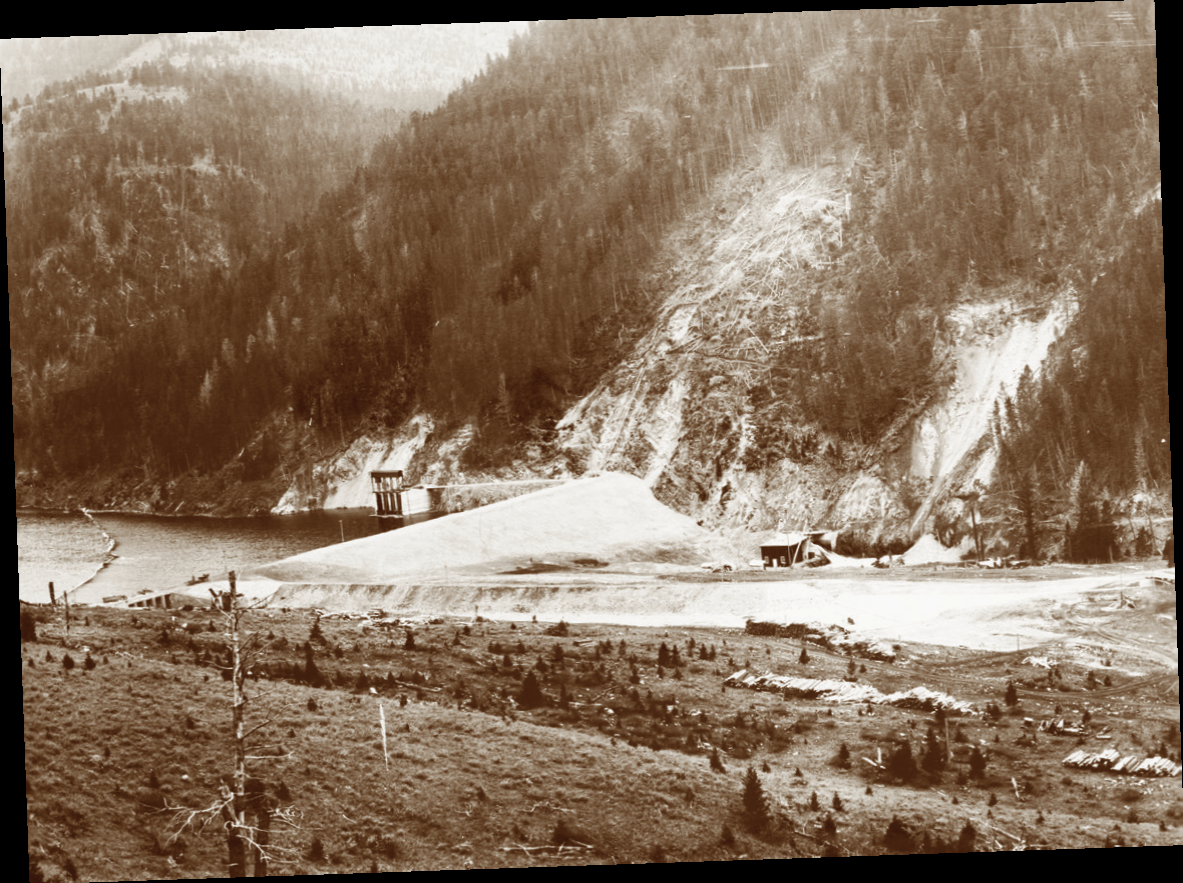
Madison Dam
The Madison Dam is a four-unit, run-of-the-river, 9-Megawatt facility on the Madison River at the head of Bear Trap Canyon. Originally built in 1901 with replacement in 1905-06. This dam is owned by NorthWestern Energy.

Hauser Dam
Hauser Dam is a six-unit, 19-Megawatt, run-of-the-river facility on the upper Missouri River. Completed in 1911 following failure of the initial dam in 1908. This dam is owned by NorthWestern Energy.
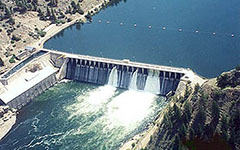
Noxon Rapids Dam
Noxon Rapids Dam on the lower Clark Fork River near the Idaho border is an earth-fill five-turbine storage facility constructed in 1955 – 59 with a capacity of 527-Megawatts. A fifth generator was added in 1977. This dam is owned by Avista Corporation of Spokane.
Holter Dam
Holter Dam is a four-unit, 48-Megawatt, run-of-the-river facility on the Missouri Rive. Completed in 1918. This dam is owned by NorthWestern Energy.
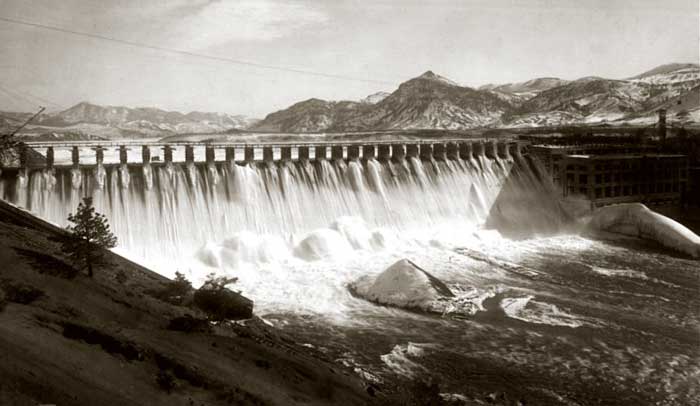
Black Eagle Dam
Black Eagle Dam is a three-unit, 21-Megawatt, run-of-the-river facility on the Missouri River. Completed in 1891 with a new dam and powerhouse rebuild in 1926-27. This dam is owned by NorthWestern Energy.
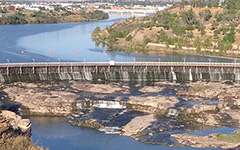
Rainbow Dam
Rainbow Dam is a single-unit, 60-Megawatt, run-of-the-river dam on the Missouri River. Completed in 1910 with an eight-unit, 35-Megawatt capacity. A new single-unit powerhouse was completed in 2013. This dam is owned by NorthWestern Energy.

Cochrane Dam
Cochran Dam is a two-unit, 64-Megawatt, run-of-the-river facility on the Missouri Rive. Completed in 1958 and named for a Montana Power Company engineer. This dam is owned by NorthWestern Energy.

Morony Dam
Morony Dam is a two-unit, 48-Megawatt, run-of-the-river facility on the Missouri River. Completed in 1930. This dam is owned by NorthWestern Energy.
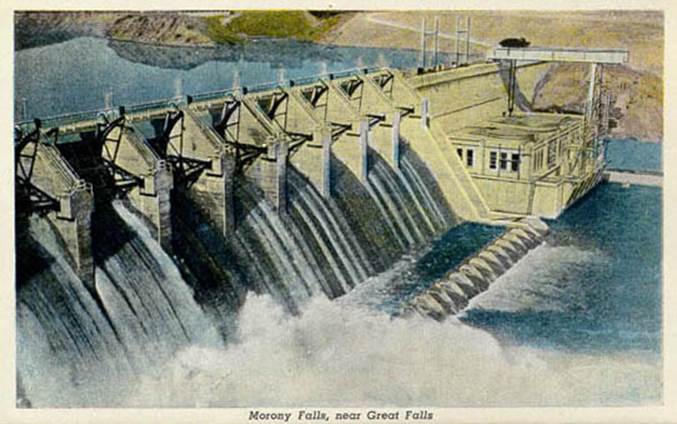
Ryan Dam
Ryan Dam is a six-unit, run-of-the-river, 60-Megawatt dam on the Missouri River. Completed in 1915 as Volta Dam and later renamed for John Ryan, the founder of the Montana Power Company. This dam is owned by NorthWestern Energy.

Seli's Ksanka Qlispe' Dam
Formerly known as Kerr Dam, this facility is a three-unit, 194-Megawatt capacity dam on the Flathead River at the outlet of Flathead Lake and is considered a storage facility. Completed in 1938. Confederated Salish and Kootenai Tribes exercised an option to purchase the dam from NorthWestern Energy in 2015.
Mystic Lake Dam
Mystic Lake Dam is a two-unit, 12-Megawatt, storage facility on Rosebud Creek in the Beartooth Mountains. Completed in 1925. This dam is owned by NorthWestern Energy.
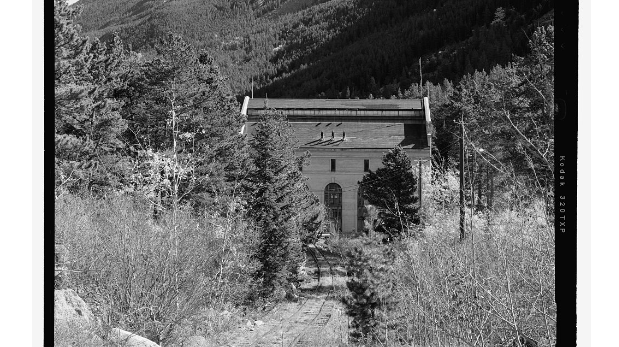
Fort Peck Dam
Fort Peck Dam is the largest earth-fill hydroelectric facility in the U.S.. This facility was started in 1933 on the Missouri River with full-pool attained around 1940. Generators were installed in the 1940s and today the facility has three generating units completed in 1951 at 105-Megawatts, and two completed in 1961 at 80-Megawatts. Generation is divided between the Western Interconnect and the Eastern Interconnect with one generator capable of switching between the two. This dam is owned and operated by U.S. Army Corps of Engineers.
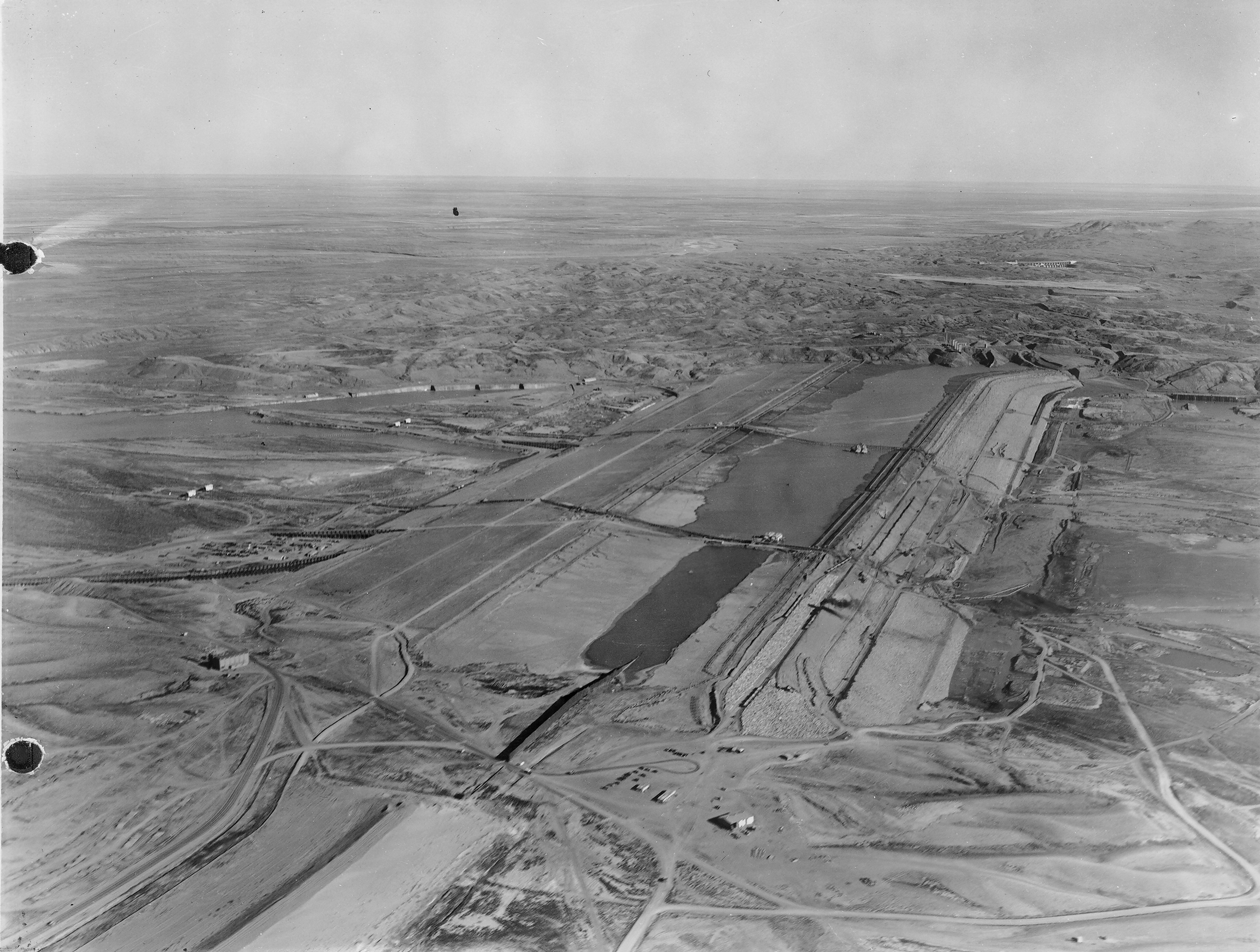
Milltown Dam
Milltown Dam was built as Clark Dam in 1908 at the confluence of the Blackfoot and Clark Fork Rivers. This dam was a run-of-the-river facility with a capacity of about 3-Megawatts. The dam backed up a great deal of metal-laden sediment dating to the flood year of 1908. The dam was decommissioned and removed between 2007 and 2010.
Toston Dam/Broadwater Dam
Toston Dam, also known as Broadwater Dam, was built in 1940 on the Missouri River as a run-of-the-river irrigation facility. A 10-Megawatt turbine was added in 1989. The facility is owned by the state of Montana's Department of Natural Resources and Conservation and is designated as a small power production Qualifying Facility by the Federal Energy Regulatory Commission.
Canyon Ferry Dam
Canyon Ferry Dam is on the Missouri River, originally dates to 1898 with improvements to the generators in 1901. A new dam just downstream was started in 1949 and completed in 1954, which inundated the older facility. The dam's three generators deliver a capacity rated at 50-Megawatts. The facility is owned by the Bureau of Reclamation.

Hungry Horse Dam
Hungry Horse Dam is on the South Fork of the Flathead River and was completed in 1953 by the U.S. Army Corps of Engineers. The dam contributes control to the hydroelectric facility at Seli's Ksanka Qlispe' Dam downstream on the main Flathead River. Four generators were upgraded in the 1990s to a capacity of 428-Megawatts.
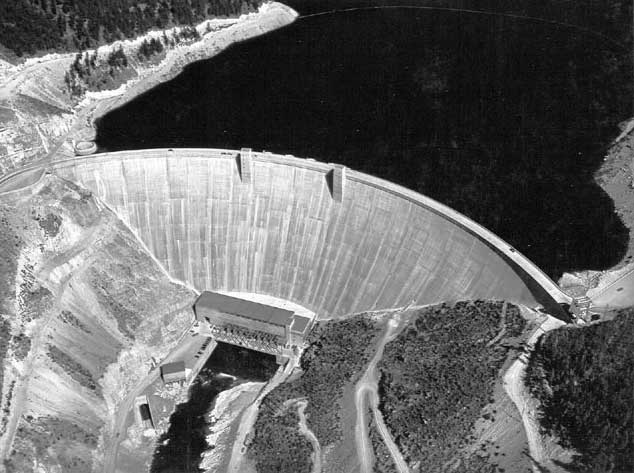
Libby Dam</h4
Libby Dam is on the Kootenai River and was dedicated in 1975 by President Gerald Ford. The dam backs up Lake Koocanusa, which extends well into British Columbia. The dam was built and is managed by the U.S. Army Corps of Engineers and its five turbines generate 600-Megawatts, which is marketed and managed by the Bonneville Power Administration. .
Yellowtail Dam
Yellowtail Dam on the Bighorn River, located on the Crow Indian Reservation, was constructed in the 1960s and completed in 1967 as an irrigation, flood control, and hydroelectric facility. It is a concrete arch style facility and backs up Bighorn Reservoir well into Wyoming. Four turbines produce 250-Megawatts. This dam is owned and operated by the U.S. Bureau of Reclamation.
Tiber Dam
Tiber Dam is a single-unit generation facility retrofitted to a flood control project on the Marias River. The dam was completed in 1956 by the U.S. Bureau of Reclamation. Retrofits in the late 1970s and early 1980s raised the dam and repaired the spillway and other features. In 2003-2004, a 7.5-Megawatt powerplant was installed by a private party.
Image Sources:
- The images of the Madison, Hauser, Black Eagle, Cochrane, and Ryan Dam are provided from NorthWesern Energy's Hydroelectric Facilities page.
- Canyon Ferry Dam Image provided by Helena History.org.
Geothermal

View entire document (PDF, 26.2 MB)
Document by Sections (PDF)
- What is Geothermal Energy? (205 KB)
- Where is Geothermal Energy Found in Montana? (787 KB)
- History of Geothermal Energy Use in Montana (3.04 MB)
- Geothermal Energy Uses - An Overview (3.69 MB)
- Geothermal Heat Pumps (907 KB)
- Aquaculture (2.51 MB)
- Greenhouse Heating (4.28 MB)
- Swimming Pool Heating (1.76 MB)
- Space Heating of Buildings (293 KB)
- District Heating (309 KB)
- Industrial Uses (430 KB)
- Electricity Generation (1.25 MB)
- Cascaded Uses of Geothermal Energy (147 KB)
- Legal Issues for Montana Geothermal Development (336 KB)
- Financial Support for Geothermal Development (141 KB)
- Further Information, Contacts and Publications on Geothermal Energy (706 KB)
- Appendix 1 - Some Potential Advantages for Electricity Power Generation (145 KB)
- Appendix 2 - Feasibility Checklist for Montana Geothermal Electricity Generation (179 KB)
- About the Author (250 KB)
Publications
- Fact Sheet on Geothermal/Ground Source Heat Pumps
- Montana Regulatory Roadmap
- Montana Index of Environmental Permits
The Montana Geothermal Program was established by Sage Resources of Missoula, the U.S. Department of Energy (DOE), and the State of Montana in May, 2005. The goal of this program is to identify and update geothermal information for Montana. This website provides the access to regional, site-specific and general geothermal energy information applicable to site development in Montana.
Development:
The potential for geothermal development in Montana, and all Western states, continues to be assessed. The Department of Energy's GDOET program has compiled information from such analyses, which indicates that Montana has more than 25,000 square miles of high-potential sites and areas.
Montana has the potential to develop significant new sources of geothermal energy. Increasing the domestic sources of clean energy is one of the most critical problems facing our nation, according to policymakers. The National Energy Policy encourages development of clean and diverse sources of energy. Geothermal energy can help supply clean, naturally occurring sources of both electrical energy and direct-heat substitutes. This website and the geothermal database are first steps toward developing these resources.
Biomass
Biomass is any organic material that has stored sunlight in the form of chemical energy. Biomass is considered the oldest source of renewable energy because of its earlier uses for fire. Biomass energy is considered a renewable energy resource because it can re-grow over a relatively short period of time. This energy can be used as a source of heat and/or electric power or liquid fuels. Wood is the best known source for biomass energy in the United States. Other biomass resources include agricultural residues, organic components of municipal and solid waste, and terrestrial and aquatic crops.
Biomass fuels provide about 3 percent of the energy consumed in the United States. There is currently one biomass cogeneration facility in Montana at Stoltze Land and Lumber Company in Columbia Falls. That facility is 2.5 megawatts and sells power to Flathead Electric Cooperative.
Below is a list of project summaries or supporting articles related to the Montana Bioenergy Program, and most are available upon request. Requests for SAE papers and a few other documents can be made to the authors or publishers. Additionally, some documents can be sent via e-mail.
- Developing a Business Case for Sustainable Biomass Generation: A Regional Model for Western Montana
- Montana Community Development Corporation. June 2010
- Map: Participating Sawmills in Biomass Energy Feasibility Study
- F.H. Stoltze Land and Lumber Woody Biomass Co-generation Plant
The Stoltze biomass energy project is located onsite at the Stoltze lumbermill in Columbia Falls, Montana. The project is a $22 million co-generation plant and is 2.5 megawatts. The energy produced from this project supplies electricity for about 2,500 homes. It is a co-generation plant because it generates electricity from the heat produced from burning wood waste such as bark and sawdust.
Net Metering & Easements
Net metering is a special type of installation that allows surplus electricity generated by the customer’s renewable system to go back on the utility electric system. The customer receives "credit" at retail rates for the electricity put back on the system, and generally has a year to use the credits. A net meter runs backward when the system produces more electricity than the customer is using. Later, the credits can be used by the customer when the renewable system is not producing so much electricity. If there is a surplus at the end of the year, the customer generally loses the credits.

Net metering is required by law in NorthWestern Energy's and the Montana-Dakota Utilities' service areas. Renewable installations of less than 50 kW capacity are eligible for net-metering on the NorthWestern and MDU systems. All electric co-ops in the state have voluntarily adopted net-metering policies. However, individual policies may differ. Be sure to check with your electricity provider before purchasing renewable energy equipment.
You can get further information by viewing NorthWestern Energy's interconnection agreement on their website. For information on net metering on the MDU system, contact Karl Tammar, Montana-Dakota Utilities (701-222-7674). Rural electric cooperatives members should contact their cooperative’s office to see if net-metering is available.
Montana law allows the creation of easements to protect solar and wind rights. You will need to negotiate with neighboring property owners for these easements.
An easement to protect the exposure of a solar energy device must be created in writing and is subject to the same conveyancing and instrument recording requirements as other easements on real property. An instrument creating a solar easement must specify at least:
- the vertical and horizontal angles, expressed in degrees, at which
the solar easement extends over the real property subject to the solar
easement; and - any terms or conditions under which the solar easement is granted or will
be terminated.
Authority: 70-17-301 et seq. MCA
A wind easement is an interest in real property. A property owner may grant a wind easement in the same manner and with the same effect as the conveyance of an interest in real property. The wind easement runs with the real property on and over which the wind resource flows and may not be severed from the property. A wind easement doesn’t affect rights belonging to or the dominance of the mineral estate. It is not an easement or grant of right of way for transmission lines.
Authority: 70-17-401 et seq. MCA
